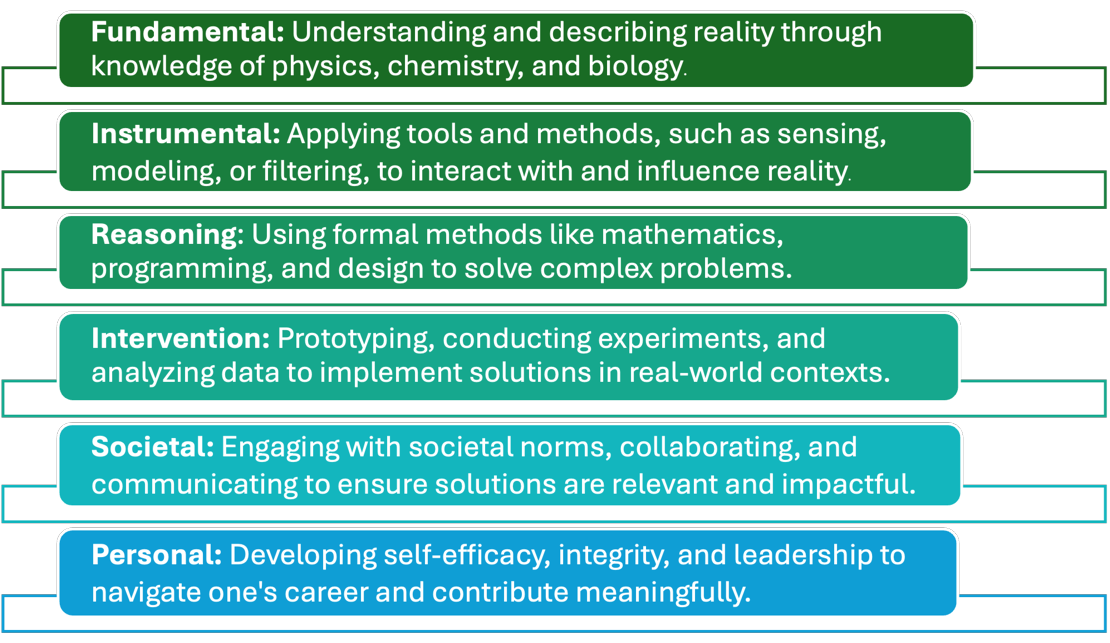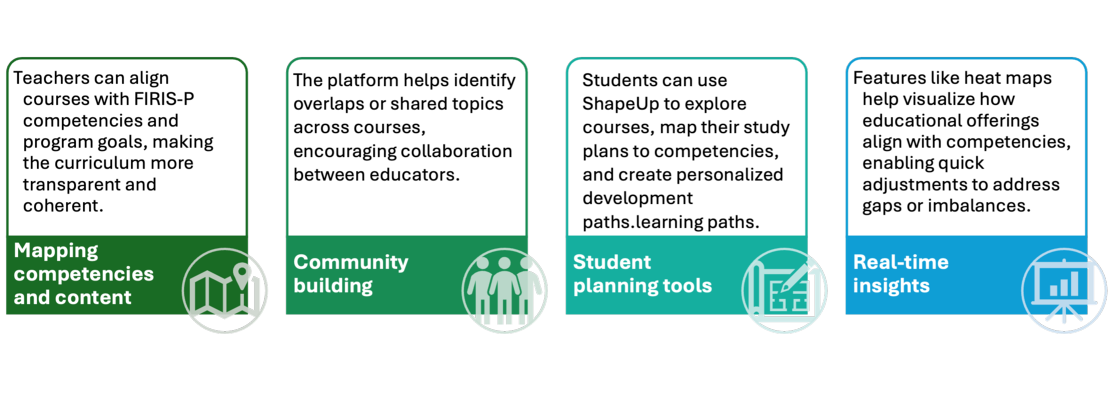Curriculum mapping demands flexibility to meet student and market needs. Inspired by Jan Buitenweg’s FIRIS-P framework and ShapeUp tool, educators and students can collaboratively design competency-based learning paths. In this interview, we get to know more about the man behind the framework.
Could you start by sharing a bit about yourself and your background? What are FIRIS-P and ShapeUp, if you’d pitch them to me?
My name is Jan Buitenweg, and I’ve been part of the University of Twente for almost my entire academic journey. I started here as a student, stayed on for my PhD, and eventually became an full professor. Over time, I was several times involved in curriculum development, especially for programs like biomedical engineering and technical medicine. I’ve held various roles, from teaching to advising students and contributing to examination boards and program committees. One consistent thread in my career has been a focus on improving how we educate future professionals—making it more meaningful, connected, and aligned with real-world needs.
Now, FIRIS-P is a competency framework I developed through years of reflecting on these educational challenges. It answers a fundamental question: What does it mean to be a professional in a field like biomedical engineering? FIRIS-P identifies six core competencies—Fundamental, Instrumental, Reasoning, Intervention, Societal, and Personal—that capture everything a biomedical engineer needs to thrive. It’s not just about technical skills but also about understanding societal impact and personal growth.
ShapeUp is the tool – still partly in development - that puts FIRIS-P into action for curriculum design and flexible studypaths. Think of it as an interactive catalog where course content, program goals, and competencies come together. It helps educators design courses that explicitly tie into FIRIS-P and gives students the ability to chart personalized study paths. If you’ve ever wondered how to bridge what students learn in the classroom with the roles they’ll play in the real world, FIRIS-P and ShapeUp are designed to do exactly that.
How did your journey in education and curriculum development lead you to work on projects like ShapeUp and FIRIS-P?
My involvement in curriculum development highlighted recurring challenges in aligning program goals with course offerings and the professional realities graduates face. Teachers and students often struggled to connect program goals with their specific tasks or choices, particularly when designing education or selecting electives. Additionally, accreditation processes revealed that existing frameworks often lacked the clarity or practical applicability, that is needed to guide education meaningfully.
In 2018, while part of a curriculum committee, I began reflecting on what competencies truly define biomedical engineers. This led to a series of discussions with colleagues, eventually resulting in FIRIS-P. The idea was to create a framework that not only outlined competencies but also provided a narrative structure, helping educators and students articulate their roles and goals in professional contexts. ShapeUp emerged as a complementary tool to make this framework actionable, using technology to bridge gaps between educational design, student choices, and professional needs.
How does the FIRIS-P framework align program goals with professional competencies?
FIRIS-P serves as a bridge between educational content and the professional identity students aim to develop. Each element of the framework represents a key aspect of a professional's role:

By explicitly linking course content, program goals, and these competencies, FIRIS-P ensures that students and educators have a clear understanding of how their activities contribute to professional development.
How will the ShapeUp tool and FIRIS-P framework enable students to take more control over their personalized study paths while balancing academic standards and flexibility?
ShapeUp uses FIRIS-P as its foundation to help students visualize their learning paths. Students can reflect on their strengths, ambitions, and areas of interest through the competency framework, then align these with course offerings. This allows them to create personalized study plans that fit both their goals and program requirements.
For example, ShapeUp enables students to explore how specific courses contribute to their professional competencies and make informed choices about electives or even courses outside their program. This flexibility supports self-directed learning while maintaining academic rigor through alignment with program goals. Students can also use ShapeUp to justify their choices when seeking approval from examination boards, ensuring that their personalized plans remain within institutional standards.
How do ShapeUp and FIRIS-P leverage technology to support competency-based learning, and what unique features assist curriculum designers and teachers in fostering flexible learning environments?
ShapeUp is built on a smart, interactive platform that makes curriculum design and student planning much easier. Some of its standout features include:

These features not only streamline curriculum design but also promote a culture of shared responsibility and innovation in education.
What’s next in the development of ShapeUp / FIRIS-P? What are future plans?
Right now, we’re piloting ShapeUp in the biomedical engineering program, and the next step is to expand to related programs – several programs already have expressed their interest.. My dream – and of many others - is to eventually roll it out university-wide, supporting everything from bachelor’s and master’s programs to lifelong learning initiatives.
We also see opportunities for ShapeUp and FIRIS-P to support teacher professionalization, interdisciplinary collaboration, and even micro-credentialing. By connecting education with research and professional development, we can make learning more flexible and future-proof.
What advice would you offer educators interested in adopting similar competency-driven approaches?
Start by identifying what truly defines the professions you’re preparing students for. Avoid vague program goals that don’t give students or teachers clear direction. Instead, create a competency framework that’s grounded in the skills and knowledge your graduates will need in the real world.
It’s also important to involve teachers and students in the process. The framework should resonate with them and feel relevant, not just like an administrative exercise. Finally, tools like ShapeUp can help bring this vision to life by making the connections between competencies, courses, and goals visible and actionable.






